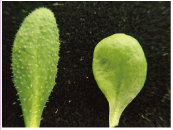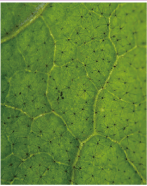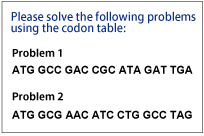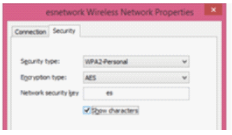|
 |
■ Bioresources information is available at the following URLs
|
 |
|
Introduction to Resource Center <No.58> Attempt at Public Relations from Resource Projects
Masatomo Mobayashi (Head, Experimental Plant Division, RIKEN BRC)
The Experimental Plant Division, RIKEN BioResource Center (RIKEN BRC), has been pursuing resource projects centered on Arabidopsis thaliana, which is a typical experimental plant. Presently, A. thaliana is introduced in senior high school textbooks and through mass media. However, the majority of people in Japan were unaware of this plant in 2001, when RIKEN BRC was established. To establish awareness regarding the significance of model organisms and resource projects, effective public relations are required.
Public relations involve the promotion of informational activities and excellent relationships between organizations and the general public. This article introduces public relations activities and examines their effects and problems.
|
Observation of Bioresources |
In Tsukuba City, where RIKEN BRC is located, an event called "Tsukuba PhD Kids" is held each summer. During this event, elementary and junior high school students visit research institutions in the city, participate in experiments, and interact with researchers. Through these activities, these children develop their interest in science. RIKEN BRC participates in this event every year, and the Experimental Plant Division directed the event in the 2014 fiscal year.
Elementary school children are accompanied by their guardians during this event. Therefore, this is an opportunity for both children and their guardians to participate in research observation, which is the important feature of this event.
|
| In the program, 10−20 children were asked to observe normal A. thaliana with trichomes (projections that look like small spines on the surface of a leaf) and the gl1 mutant without trichomes (Fig. 1), using a magnifying glass. Subsequently, the children were asked to observe the surfaces of leaves of familiar vegetables such as tomato and eggplant, under a stereoscopic microscope. Both children and their guardians eagerly observed these plant species.
Fig. 1. Leaves of Arabidopsis thaliana: wild-type (left) and
the gl1 mutant (right). The surface of a leaf of the gl1
mutant does not have trichomes and is flat and smooth.
This was actually the first time that all our staff observed the magnified surface of an eggplant leaf. Even we were surprised to see dark purple projections that look like sea urchin spines (Fig. 2) and again realized the importance of novel discovery in research. In addition, an observational workshop that commemorated the Fascination of Plants Day was organized during the event at Nagoya City Science Museum in May 2015, which was well-received by all participants.
Fig. 2. The back side of an eggplant leaf shows
a large number of radially arranged spines.
|
|

 |
|
Explanation of Bioresources |
The best way to understand bioresources is by directly observing the objects. When this is not possible, the bioresource must be verbally explained using Microsoft PowerPoint. However, even at an academic conference for experts, attracting the attention of all participants is extremely difficult. Therefore, when the number of participants is small, interactive quiz programs are organized.
I would like to introduce a successful example of a quiz program, in which the participants were asked to provide an English word that could be obtained when a base sequence was expressed in single-letter amino acid codes (Fig. 3). Through this exercise, the participants might realize that when a single base is changed (the mutation of a gene), the meaning of the word (the function of the gene) also changes. Subsequently, mutants of A. thaliana were introduced. The quiz program was well-received, with active participation from the audience, many of whom correctly answered the questions. |
|

FIg. 3. Examples of problems
Famous city names are hidden. |
|
Considering factors such as observing actual objects and listening to lectures, we think that people who have little knowledge of biology will be considerably impressed by bioresources. However, a single event can only reach a maximum of 100∼200 people, so the range of bioresources is limited. Presently, we have been working to develop an observation kit used for school education, where our division exhibits mutant strains of A. thaliana. This has made these tools accessible to junior and senior high schools. In addition, we will develop cultivation protocols that can be used by teachers who have no experience in growing experimental plants. To this end, we have been developing video protocols since the 2014 fiscal year. In the 2015 fiscal year, we have prepared cultivation data and will continue our activities so that a large number of people can support our resource projects. We appreciate your cooperation. |
|
|
|
What you should be aware of when using Wi-Fi
|

There will be occasions when you need to connect to a public Wi-Fi network to access the Internet when outside of your home or office. This article introduces some points that you need to keep in mind when using public Wi-Fi access points.

There are three types of authentication standards, namely WEP, WPA, and WPA2, that are used when using a Wi-Fi network. Each supports a different type of encryption (Table 1). The most secure combination is WPA2-AES, which is WPA2 combined with AES encryption (※1).
Table 1. Types of authentication and encryption
Authentication Method |
Data Encryption |
Safety |
| WEP: Wired Equivalent Privacy |
WEP |
Vulnerabilities exist, and the risk is high |
| WPA: Wi-Fi Protected Access |
TKIP: Temporal Key Integrity Protocol
|
There is some risk |
| AES: Advanced Encryption Standard |
Safe |
| WPA2: Wi-Fi Protected Access 2 |
TKIP: Temporal Key Integrity Protocol
|
There is some risk |
| AES: Advanced Encryption Standard |
The safest |
|

You can identify the authentication and encryption method used in a Wi-Fi access point that you are connected to by following the below steps on Windows 8:
① Select "View network status and tasks" from the control panel.
② In the "View your active network connections" section, select the Wi-Fi access point that you are connected to (Fig. 1, red rectangle).
③ Select "Wireless properties."
④ From the "Security" tab, you can confirm the authentication and encryption method used (Fig. 2).

The Wi-Fi authentication and encryption method can be confirmed as explained above, but it should be noted that the password ("Network security key" in Fig. 2) must be kept a secret. For public Wi-Fi access points where the connection password is also made publicly known, there are techniques that adversaries can use to eavesdrop on communications even if you are using the most secure WPA2-AES standard.
Recognizing that there is risk when an unsafe encryption is used or when the connection password is publicly known, if you still need to transmit sensitive information over the Internet, you can use SSL (※2), VPN (※3), or file encryption software to encrypt data before sending them through the Wi-Fi network, thereby preventing the content from being eavesdropped.
|
|

Fig. 1. Selecting the wireless network that you are currently connected to

Fig. 2. Confirming the authentication and encryption method.
|
|
| |
※1 |
Sometimes, this is expressed as "WPA2-PSK (AES)" or "WPA2 Personal (AES)." |
| |
※2 |
Websites whose URL begins with https:// encrypt communications. |
| |
※3 |
This is a technology that provides better security and is similar to a dedicated connection. |

Here are some other tips to note besides authentication and encryption methods:
- There may be malicious access points designed to steal data, so do not connect to access points where you do not know the operator of the access point.
- If you use file-sharing software, turn the file-sharing function off when connected to a public Wi-Fi network.
I recommend that everyone be aware of the risks associated with using public Wi-Fi and take the time to confirm whether it is secure.
(Hiroki Watanabe) |
|
|